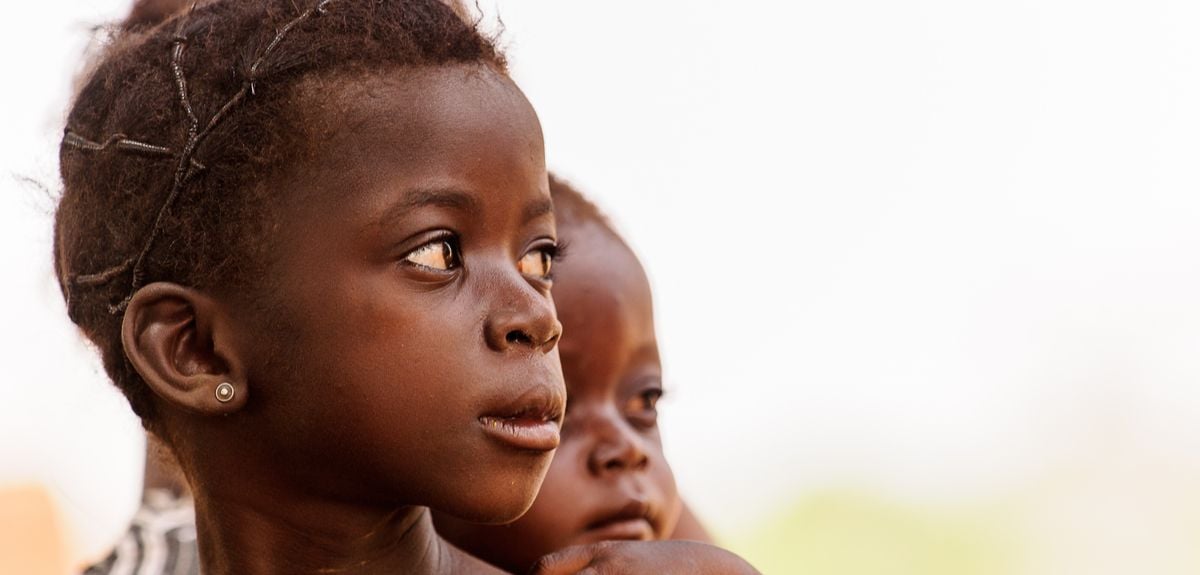
Image via Shutterstock.
One in five twins dies before the age of five in sub-Saharan Africa
Researchers have discovered that one-fifth of twins in sub-Saharan Africa die before the age of five in what is thought to be the first comprehensive study to track the development of twin mortality in that part of the world.
Researchers from the University of Oxford’s Department of Sociology and Radboud University in the Netherlands estimate that in sub-Saharan Africa, the death rate for twins is three times higher than for singletons under five and that the gap in survival rates between the two groups is growing.
The researchers analysed 90 Demographic and Health Surveys (DHS) carried out since 1995 in 30 sub-Saharan countries. The survey data showed that twins made up 15% of babies who had died within the first 28 days, and also represented 11% of all deaths among the under-fives.
The findings, published in the journal, Lancet Global Health, suggest that far more care is needed for this ‘extremely vulnerable’ group, with the surveys revealing that only half of women expecting twins reported receiving any medical assistance at all at the birth.
In sub-Saharan Africa, too few pregnant women expecting twins receive the appropriate medical care. Good antenatal care and a timely referral for a hospital delivery would greatly increase the survival chances of twins in this part of the world. Improvements in healthcare services during pregnancy, at delivery and in the weeks after birth are vital.
Christiaan Monden, Professor of Sociology and Demography at the University of Oxford
Naturally occurring twin pregnancies are much more frequent in sub-Saharan Africa than in other parts of the world, but many women in the region receive little antenatal care and give birth in non-medical settings. Just 51 per cent of mothers said they had received medical assistance of a nurse, midwife, or doctor at the birth. The researchers estimate that 315,000 twins die in sub-Saharan Africa each year.
Mortality rates for the under- fives have declined in recent decades, but more slowly for twins. Between 1995 and 2014, the death rate for singletons under five was halved. However, among twins, the death rate was only reduced by 35 percent over the same period.
The data were gleaned from large representative household surveys. Women aged 15-49 were asked about all live births, including whether they had had singleton or multiple births, and whether and when a child died. The researchers connected data on 1.6 million births, including around 56,600 twins, to see how their survival compared with that of singletons. They also assessed the social and economic background of the families involved to see whether this contributed to a child’s chance of survival.
The study remarks that the real level of twin mortality is likely to be higher than the data suggests due to under-reporting of twin births and deaths. Only live births are registered in the DHS surveys, and where one of the twins is still-born, the surviving twin is often registered as a singleton.
Christiaan Monden, Professor of Sociology and Demography at the University of Oxford, said: ‘Obviously, it would be too simple and unrealistic to say all women should just give birth in a nice hospital. It is important, however, to raise awareness. This sizable and hugely vulnerable group has not been on the radar of international organisations and actions like the Millennium Development Goals and its successor the Sustainable Development Goals.
'Twins are always a high-risk group, associated with premature delivery and complications that are life threatening for the mother too. Nowhere are there as many spontaneous twin pregnancies as in sub-Saharan Africa.’
Professor Monden has appeared in a Lancet Global Health podcast to discuss his research.
 Nearly 500,000 children could die from AIDS-related causes by 2030 without stable PEPFAR programmes, Oxford experts estimate
Nearly 500,000 children could die from AIDS-related causes by 2030 without stable PEPFAR programmes, Oxford experts estimate
 Expert Comment: Why has Trump launched so many tariffs and will it cause a recession?
Expert Comment: Why has Trump launched so many tariffs and will it cause a recession?